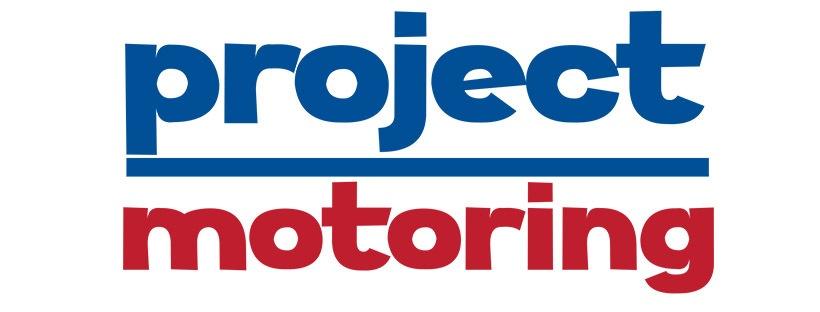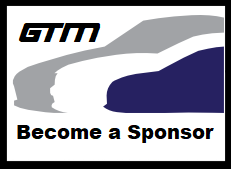The Solo-able Student
Article By: Bruce S; 8/1/2017
(This article is written about a track day that was conducted by Hooked on Driving. Hooked on Driving (HoD) has only one instructed run group (Group A which is the novice run group). Group A drivers are eventually promoted to Group B (intermediate) where they are not typically assigned an instructor, but may ask for one for one session. Other clubs have different policies and run group requirements, but HoD can afford their coaches some discretion to modify their procedures based on conditions and the student’s background and experience.)
My student was a first-time HoD customer who was signed up for a Saturday only track day at Summit Point’s – Shenandoah Circuit. The event provided 5 sessions for each driving group per day. The student had only participated in two or three track events during circuit-cross events such as the BSR/Get Fast Productions Refrigerator Bowl held at Summit Point in the winter. He has 4 years’ experience with autocross and is an autocross instructor. He started autocross with a Ford Focus ST, but switched about a year prior to a Mazda Miata NB. His experience, comfort level and knowledge of motorsports was well above the average for an A group student.
The Friday before the event the area received heavy rainfall. There were on-and-off rain showers during the first two A group sessions. Because my student has prior autocross experience and is familiar with car dynamics, he was a little more aggressive during the first two sessions compared to the other drivers. As such, he passed other drivers in higher horsepower cars. He did spin the Miata once during the first two sessions on recently repaved sections of track that were smoother than the surrounding surface during his acceleration out of a turn, but he knew exactly why he spun and never repeated the same mistake at the same locations.
By the time we started the third session of the day, the rain had stopped and the track was mostly dry. My student’s performance on track reflected his experience level and he was passing much more capable cars while carrying on a constant conversation with me. The student was initiating the conversation, even though I usually ask students to let me know when my talking distracts them while on track. He had no such distractions and wanted to know more about HoD and track events.
After the third session, I consulted with the A group coordinator about letting the student drive solo. I pointed out his spins, but made a case that his learning curve was steep (he was learning quickly) and he was always verbally pointing out slight mistakes he was making and the corrections he planned to make to prevent them in subsequent laps. The A group coordinator referred me to the Chief Instructor (CI). The CI approved soloing the student for the fifth session, but we received a suggestion from Michael (Crutch) Crutchfield to solo the student during the fourth session, and then have me ride with him during the fifth session to see how his solo session went. We all agreed to implement Crutch’s recommendation.
The student completed his fourth session with no problems under a clear sky and dry conditions. I met him at his parking spot after the session and asked for his debrief. Many of the things this student did are based on his advanced motorsports experience and knowledge. Many of his observations are the same as many of us reading this article.
Below are some points that the student and I felt made Michael’s recommendation a good idea for the situation.
- The student felt that without an instructor in the car, he was able to push beyond his level of performance from earlier with me in the car. We discussed this both in and out of the car and students are more conservative with an instructor in the car. Confident students are more willing to go about 10% outside their comfort zone when they are by themselves. The solo student is responsible for only themselves in the car and the others on the track around them. With this student’s high level of situational awareness, he did not venture into that 10% while in traffic, but had not reservations trying new lines or techniques by himself, within reasonable limits.
- Also, the opportunity to try something in that 10% range is very transitory – it may happen only once at a particular corner when there is no traffic during that session and the student must seize the opportunity and doesn’t have time to politely ask the instructor if they can perform the action and explain what they want to do.
- Students and instructors get more fatigued as the day progresses, so giving the student an earlier session to solo has them more alert to handle anything that might go awry during their pushing out of their comfort zone.
- By pairing the instructor and student for the final session following the solo, the student can demonstrate what they taught themselves or experimented with during the solo session at the locations on the track instead of having to describe or point to a track map.
During debrief at the end of the day, the student was very happy with his experience that day. I believe that Michael’s suggestion of soloing the student before the last session contributed to the student’s learning and confidence. There are a number of factors that also contributed to the student’s successful participation’s, such as his experience level, his ability to visualize concepts that were verbalized, etc. Michael’s recommendation is good sound advice based on his years of experience and should be practiced with solo-ready students when conditions merit the use of the practice.
The Not-so-Solo-able Student
Article By: Brad N; 8/1/2017
My situation with whether to solo my student or not was a little different from that of Bruce. My student had a few track weekends under his cap and had driven in the intermediate run groups before. He signed up for A group because he didn’t know the track. He (and his son) were sharing a 2013 Shelby Mustang GT500 with some go-fast goodies, upgraded suspension, tires, and brakes. The car was fast! When I say fast, I mean coming down the back straight at Shenandoah circuit you would easily on top of the A driver in front of you in the blink of an eye.
As Bruce mentioned, the earlier sessions were very wet and conditions were not optimal, especially not for such a fast car. My student took his time and was safe and cautious during those sessions. He didn’t do anything that would have warranted bad behavior save for the errant point-bys in non-passing zones which we cleaned up in later sessions. I will say there were a few times that the traction control saved us as the car began to lose traction and oversteer. I am not confident that he would have been able to save it if the nannies were not in place.
Later in the day the weather cleared up and the track dried and the speeds increased, rapidly. Again the student was controlled and cautious and he wasn’t doing anything that I felt would have been considered a danger to himself or to the other drivers on track. However, the car was much more capable than probably any of the other cars in the A group that day. Our closure and passing rates was evidence that at least the car belonged in a higher run group. I can see why the student was moved to intermediate before, but I don’t necessarily believe it was because of his skill level, per say. By the end of the day I was confident that the driver was solo-able and therefore I set up for him to get a check ride with another instructor during the first session of the next morning.
Sunday morning – the check ride commenced and the other instructor offered his opinion. The student wasn’t ready to be solo, but the student also shouldn’t be in the A group either. So he offered a compromise, move the student up to the higher run group in order to put some heat on him with cars and drivers that were more in line with the caliber of his car. This would allow the student to learn more than just being able to terrorize the other novice drivers in A. This was a great idea, so we tried it.
The other instructor, Shane, took the student under his wing and worked with him in the higher run group as well as on the skid pad. Shane has much more RWD experience and could help the student better than I ever could. And to add an additional wrinkle, we enlisted the help of Matt Yip, seasoned SCCA club racer and all around bad-ass, to chase the student in his ITS prepped Civic Si. This plan worked wonderfully and the two practiced all sorts of passing drills during the B group session. The student learned a lot and was very happy by the end of the day and weekend. This also allowed me to focus my energy on working with the son in A group exclusively. The son did very well also, despite getting a bit of the red mist (aka “target fixation”) trying to catch a Corvette in his sights. After talking him down a little the rest of the sessions were fine.
Sometimes, you may think a student is solo-able or more advanced than they are because of the capabilities of their car. This is why check rides with other instructors and getting a 2nd or 3rd opinion are so important. I feel my student very well could have been soloed in the A group and would have done fine, but the student also probably wouldn’t have learned anything about himself or his car and at the end of the day, would that have helped anyone in the long run? I know being able to more quickly spot things will come with more experience instructing over time.
I was asked if I was ready to handle this student and his son and I was open to the challenge as my first real instructing gig.
I think it was a great experience for all involved to go through this situation and learn from it.
Never stop learning.
















